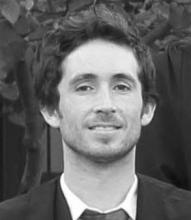Supervisor: Dr Michael Ramage
 |
Research overview:
This research project looks into the opportunities for efficiency across the value chain of Multi-storey Wood Construction. Currently, the increasing demand for urban high-rise housing units worldwide intersects with the urgent need to address climate change. The building produces 35 per cent of greenhouse gas emissions, half of the extracted materials and a third of the total waste landfilled in some regions. In this context, the innovation in Engineered Wood Products for multi-storey buildings arises as one of the most promising alternatives to steel and concrete. Wood is renewable and recyclable; therefore, if well managed is an infinite resource. Also, approximately 50 per cent of the mass of a tree is carbon absorbed from the atmosphere, which remains sequestered in the structure of wooden buildings as long as it is in use. Therefore, timber buildings' carbon footprint can be neutral or even negative. However, numerous political, technical, social and economical barriers limit the development of Multistorey Wood Construction across the supply chain. The number of obstacles evidences the various opportunities for increasing efficiency. Yet, both barriers and opportunities have not been studied significantly; and therefore, the potential impact of improved practices on efficiency have not been analysed and measured.
Biography:
Eduardo is a PhD student at the Centre for Natural Material Innovation with previous experience in leading interdisciplinary design teams and R&D projects. He has collaborated with academia, governmental institutions and the industry to develop construction systems, sustainable materials and policies. His recent work has focused on innovation on multi-storey wood construction and technology transference to the industry. He is an architect with postgraduate studies in Finland and the UK in the areas of timber construction and policies.
